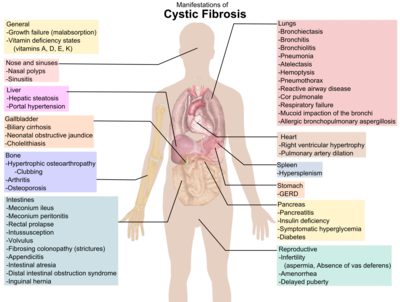An Individual Heterozygous For Cystic Fibrosis
Much as sentences are composed of long strings of words, each made of
letters; genes can be thought of as long strings of chemical words,
each made of chemical letters, called nucleotides.
Just as a sentence can be changed by rearranging its letters, genes can
be mutated, or changed, by changes in the sequence of their nucleotide
letters. The gene defects in CF are called point mutations,
meaning that the gene is mutated only at one small spot along its
length. In other words, the delta-F508 mutation is a loss of one
"letter" out of thousands within the CFTR gene. As a result, the CFTR
protein made from its blueprint is made incorrectly and cannot perform
its function properly.The CFTR protein helps to produce mucus.
Mucus is a complex mixture of salts, water, sugars, and proteins that
cleanses, lubricates, and protects many passageways in the body,
including those in the lungs and pancreas. The role of the CFTR protein
is to allow chloride
ions to exit the mucus-producing cells. When the chloride ions leave
these cells, water follows, thinning the mucus. In this way, the CFTR
protein helps to keep mucus from becoming thick and sluggish, thus
allowing the mucus to be moved steadily along the passageways to aid in
cleansing.







No comments:
Post a Comment